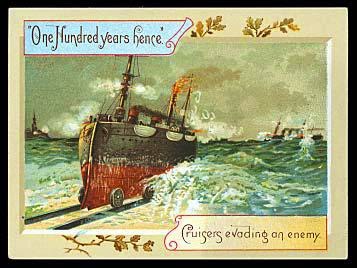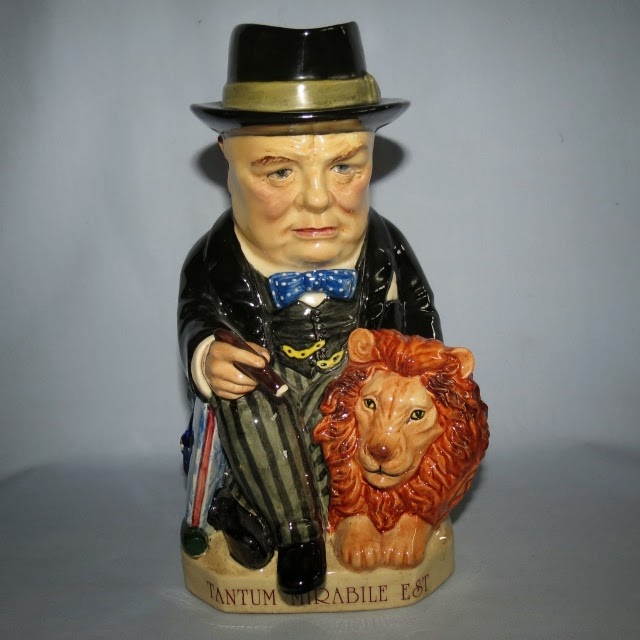For the last Holiday Season, this blog featured a distinct sub-category of collectible pre-Prohibition bottles known as “Merry Christmas flasks.” These were glass containers that traditionally were given away by distillers and whiskey dealers at Christmas and New Years to favored customers, be they saloonkeepers, bartenders or frequent retail patrons. Many of these were “label under glass” (“L.U.G.”), items that today fetch considerable prices.
The first shown left is a label under glass example, a variant on one shown last year. These were generic, that is, they were produced by a glass company and marketed through catalogues to organizations and individuals in the liquor trade. This one would have had a small paper label attached, probably on the bottom front that identified the giver. Those tend to get washed off or otherwise lost as the Merry Christmas flasks age. This one is likely over 100 years old and has achieved “antique” status.
 Not all holiday flasks were as innocuous as Christmas card images. Following are several that approached the season with humor. The first, a L.U.G. bottle, lacks identification indicating a long lost paper tag had once adhered. Because the label is under glass the image has survived more than a century. The bedraggled but smiling soldier at right likely is a reference to the Spanish-American war, dating it to about 1898. The motto below reads: “But you ought to see the other fellow,” probably noting the military victory American forces had achieved over the Spanish.
Not all holiday flasks were as innocuous as Christmas card images. Following are several that approached the season with humor. The first, a L.U.G. bottle, lacks identification indicating a long lost paper tag had once adhered. Because the label is under glass the image has survived more than a century. The bedraggled but smiling soldier at right likely is a reference to the Spanish-American war, dating it to about 1898. The motto below reads: “But you ought to see the other fellow,” probably noting the military victory American forces had achieved over the Spanish.
It cost more for a liquor organization to put its own name on a bottle under the glass, as M.J. Millers’ Sons have done above left, depicting a bartender in a white apron about to open a bottle of rye whiskey dated 1891. The motto below identifies the contents as “corking good stuff.” The label identifies the company as “Wholesale and Retail, Liquor Dealers, Westernport, Md.” Farmer Melky (Melchior) Miller founded his distillery about 1875 near Accident, Maryland. In 1902 he sold the business to his three sons, William, John, and Charles. They became known for the creative design of the jugs and bottles in which they marketed their products. This flask is indicative.
 Many Christmas flasks were provided with a paper label. Few of these would survive the vagaries of time, leaving the bottle plain and no clue as to its initial use. The label on the bottle shown here is in general good condition with a just a bit of damage to the left top. Like the two prior bottles, this one had a bit of mischief. The boy must have had a full bladder since he has been able to write extensively in the snow to wish us a “A Merry Christmas + a Happy New Year,” as his dog looked on. This flask bears the identification of Dan Longbrake, a liquor dealer from Lake View, Ohio, a suburb of Cleveland.
Many Christmas flasks were provided with a paper label. Few of these would survive the vagaries of time, leaving the bottle plain and no clue as to its initial use. The label on the bottle shown here is in general good condition with a just a bit of damage to the left top. Like the two prior bottles, this one had a bit of mischief. The boy must have had a full bladder since he has been able to write extensively in the snow to wish us a “A Merry Christmas + a Happy New Year,” as his dog looked on. This flask bears the identification of Dan Longbrake, a liquor dealer from Lake View, Ohio, a suburb of Cleveland.  The next flask, top left, is also bears a slightly damaged paper label, one that depicts a strange Christmas scene. It appears to be a Father Christmas (or Santa Claus) looking back over his shoulder at a large two-masted sailing ship apparently about to sink in heavy seas. Not the most merry of holiday illustrations. The label identifies Joseph Horter in Zanesville, Ohio as the benefactor. Horter appears to have been a immigrant from France. Perhaps the label reflects his ocean travel to the United States.
The next flask, top left, is also bears a slightly damaged paper label, one that depicts a strange Christmas scene. It appears to be a Father Christmas (or Santa Claus) looking back over his shoulder at a large two-masted sailing ship apparently about to sink in heavy seas. Not the most merry of holiday illustrations. The label identifies Joseph Horter in Zanesville, Ohio as the benefactor. Horter appears to have been a immigrant from France. Perhaps the label reflects his ocean travel to the United States.
A more festive image was projected by the following flask. Its paper label was dominated by a clown figure whose red mouth seems to be calling out “Merry Christmas and Happy New Year.” It bears no identification as the did the prior two flasks. But the space left under the two wreaths indicates that it was a “generic,” image, available for printing the name and address of the giver.
This flask, like others shown here, would have held anywhere from a full half pint to a few swallows of whiskey. The mini-flask at left would have given little refreshment.
 Although the final example shown below does not qualify as a flask, it still wishes us a “Merry Christmas. It is a bail-top ceramic mini-jug that has been identified as having been issued for Four Roses whiskey. This brand was originated in Atlanta, Georgia, by the renowned whiskey man, Rufus Rose. The brand later was revived and made nationally known by Paul Jones from his Louisville, Kentucky, distillery. Jones, it is reported, once had been a salesman for Rufus.
Although the final example shown below does not qualify as a flask, it still wishes us a “Merry Christmas. It is a bail-top ceramic mini-jug that has been identified as having been issued for Four Roses whiskey. This brand was originated in Atlanta, Georgia, by the renowned whiskey man, Rufus Rose. The brand later was revived and made nationally known by Paul Jones from his Louisville, Kentucky, distillery. Jones, it is reported, once had been a salesman for Rufus.
These Merry Christmas flasks, even taken together with the ones presented in this blog last year, are just few of the the many that exist. As with last year, my thanks go to John Pastor, the owner and editor of the Antique Bottle and Glass Collector magazine for providing his readers each Christmas with images of these interesting bottles from his and other collections. Several of them are reproduced here. John has urged anyone with an unusual Christmas flask to be in touch with him, if possible send a picture, and perhaps it can be included in the article he intends next year. It is something to look forward to.






















































